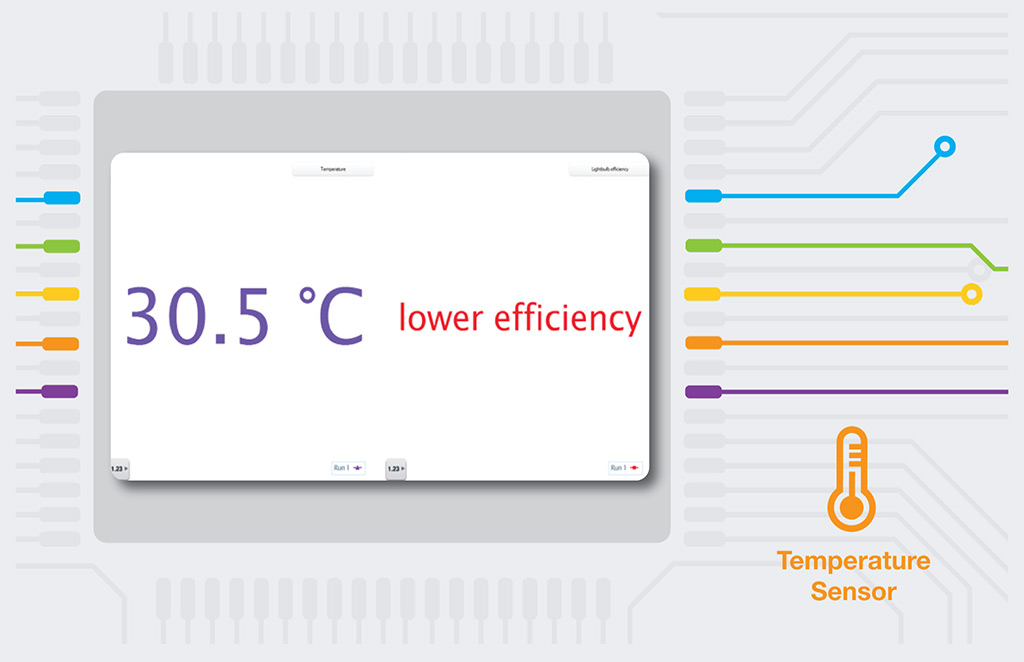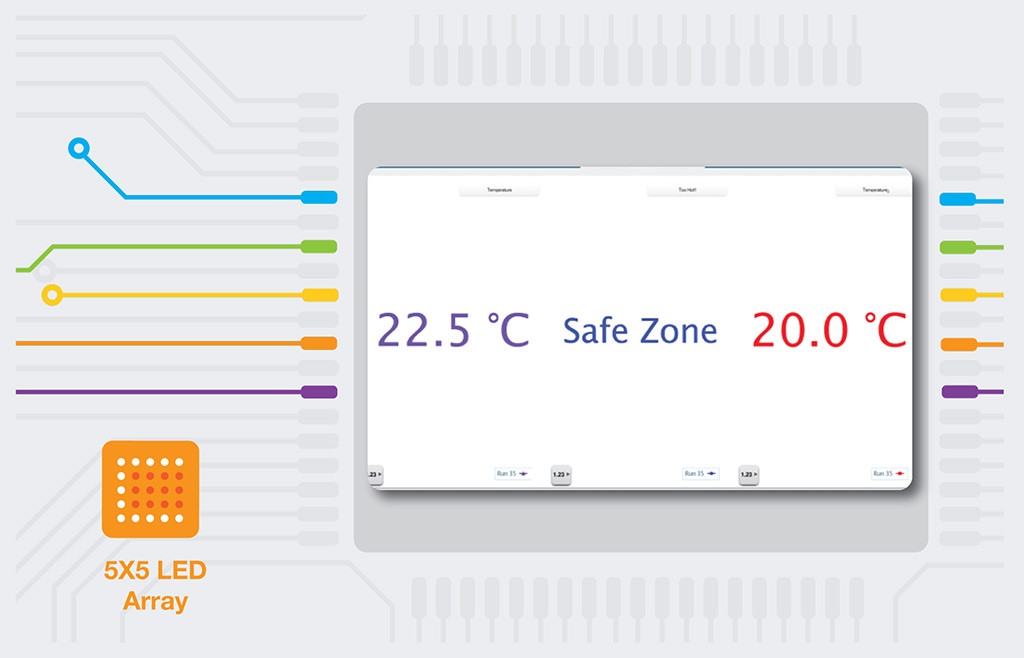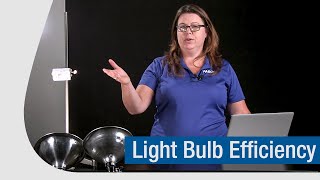The //code.Node has six interactive sensors and four device outputs that measure and respond to phenomena using code created in SPARKvue or Capstone software.
- 1x //code.Node
- 1x USB Charging Cable
See the Buying Guide for this item's required, recommended, and additional accessories.
Product Summary
The //code.Node is a turnkey coding solution that combines real-world sensor inquiry, Blockly coding, and live data displays to drive computational thinking in STEM learning. It includes six interactive sensors and four device outputs that measure and respond to phenomena using code created in SPARKvue or Capstone software.
Today’s students live in a digital world full of sensors and devices driven by code. From automatic nightlights to emergency braking systems, sensors play an integral role in everyday life. With the //code.Node and Blockly coding, students can learn about sensors, their applications, and the code that controls them. Each //code.Node activity challenges students to create an interactive program with external responses that bring their code beyond the screen to the real world.
The //code.Node has six built-in sensors, including a Temperature Sensor, Motion Sensor, Magnetic Field Sensor, Sound Sensor, Light Sensor, and two Momentary Switches. The //code.Node’s four device outputs include a Speaker, 5x5 LED Array, and RGB LED Light. The user-friendly coding platform, Blockly is used within SPARKvue or Capstone software to program how the device collects and responds to data. Students can control how the //code.Node’s sensor inputs collect and display data, as well as how the device’s outputs respond to incoming sensor data.
Sensor Inputs:
- Light Sensor - Measures ambient light levels in both indoor and outdoor environments
- Magnetic Field Sensor - Measures the strength and polarity of magnets and magnetic fields.
- Motion Sensor - Measures acceleration to determine if the //code.Node is moving
- Temperature Sensor - Measures ambient temperature from inside the //code.Node
- Sound Sensor - Measures air pressure levels to determine the surrounding sound level
- Momentary Switches - Function as on and off switches for programmed instructions
Device Outputs:
- RGB LED Light - Can be programmed to combine red, green, and blue light of different intensities to make any color
- 5x5 LED Array - Can illuminate each light at various levels of brightness to display letters, numbers, and symbols
- Speaker - Can be programmed to produce sound in response to stimuli including phenomena, data, and code
- Text - The //code.Node is compatible with SPARKvue and Capstone text displays, allowing students to receive real-time feedback from both the software and the //code.Node device.
Compatibility with All PASCO Sensors
The integration of Blockly into SPARKvue and Capstone enables all PASCO sensors, including wireless and PASPORT sensors, to be controlled using code. After connecting a sensor to PASCO software, students can use Blockly to control the sensor’s data collection and displays. The //code.Node’s sensor inputs and device outputs can be used alone, together, or in combination with any PASCO sensor, allowing students to create intricate feedback loops, automated experiments, and more.

Skill Development
Computational Thinking and Emotional Learning
The //code.Node employs design thinking and problem solving to nurture the development of computational thinking foundations. As students progress through //code.Node lessons, they’ll be challenged to create their own pathways to success. After creating a program, the code is executed using the record button. If the correct data or signal is obtained, then the code is a success. If the outcome is not as expected, then the student knows to begin debugging their code.
As they learn to code with sensors, students will develop emotional skills, such as overcoming failures through perseverance and cooperation. Coding challenges encourage collaboration among students, as some students discover working methods sooner than others. As the class progresses, students will learn to rely on one another’s strengths to create better outcomes. Additionally, this allows educators to listen in on class discussions and reasoning while they work to find solutions.
Data Science: Closing the Gap Between Programming and Data Literacy
While the global demand for data scientists continues to grow, most educational coding solutions fail to bridge the gap between programming and data literacy. The //code.Node integrates data collection into the programming process to provide an unparalleled platform for developing early foundations in both computational thinking and data science.
Data Visualization, Collection, and Analysis with //code.Node
The //code.Node integrates data visualization with programming using our award-winning data collection and analysis software. After successfully programming sensor commands, students can visualize their data using any of the display options within SPARKvue or Capstone. These displays encourage students to practice visualizing data and selecting appropriate graph formats, while also fostering curiosity and excitement about data science.
After programming instructions for their device and collecting data, students can use SPARKvue or Capstone to analyze their findings. With tools for basic and advanced calculations, both platforms are well-suited for students of all ages. Younger students can easily find the minimum, maximum, and mean of their data, while older students can utilize advanced calculation tools for their applications. After analyzing and interpreting their code-derived data sets, students can use their findings to inform future coding decisions.

Sample Applications
Entry Level Programming: Measuring the Efficiency of Lightbulbs
In this activity students use the //code.Node’s temperature sensor to measure the heat radiating from lightbulbs and use their data to determine which lightbulb is most efficient. To make this lesson impactful, we encourage the class to have a group discussion about lightbulbs, heat, and energy consumption. Once students understand that lightbulbs vary in efficiency, they can begin programming instructions for the //code.Node’s internal temperature sensor. A successful program will generate real-time temperature data when executed using the record button. Then, it’s time to test the lightbulbs. Students can take turns holding their //code.Nodes near powered LED and incandescent lightbulbs. As they monitor their code’s performance, students should be able to determine which lightbulb produced the most heat. Finally, they should be able to determine which lightbulb is the most energy efficient.

Mid-Level Programming: Create an Anti-Scald Device
In this activity, students are introduced to a chart depicting safe and unsafe bathing temperatures and a group discussion is used to convey the lesson’s real-world applications. Students should be able to identify which water temperatures are safe using the chart. Next, the class is asked to program directions for their Wireless Temp Sensors and //code.Nodes to measure water temperatures. The 5x5 array on the //code.Node is programmed to display an “H” when the water is hot, and a “C” when the water is safe. Then, the RGB LED is programmed to display a red light when the water is too hot, and a blue light when the water temperature is safe. Finally, students program a text display that indicates whether the current water temperature is too hot or safe. Successful programs will generate real-time temperature data, a text description of the water’s safety, and corresponding //code.Node RGB LED and 5x5 array signals. This experiment is a fun, simple way to get students excited about coding input-output relationships.

High-Level Programming: Create an Anti-Theft Device
This open activity invites students with an understanding of programming to express their creativity with a real-world application. In this scenario, students are asked to create an anti-theft device that deters thieves from getting away with the //code.Node. While there are various ways to achieve this, our example utilizes the //code.Node’s accelerometer, speaker, RGB LED, 5x5 array, and momentary switches. Students begin by estimating the accelerometer’s sensitivity to various walking speeds. They should ask themselves questions such as: how fast should a thief be moving to signal the accelerometer? Should the anti-theft signals be delayed? How can the anti-theft system be turned on and off?
Students might program the //code.Node speaker to sound an alarm when the accelerometer reaches a specified threshold. They can even program the alarm to increase in frequency as the thief increases their speed! To further deter the thief, students can program the RGB LED to flash and the 5x5 array can be encoded to indicate the device’s status. When stationary, the array can display an image such as an unlocked lock or smiley face. Once the thief is in motion, the 5x5 array can change to an alternative image. Finally, students can program the momentary switches to serve as on and off buttons for the anti-theft signals. This activity employs design thinking, cooperation, computational thinking, and problem-solving skills in a format that engages today’s digitally literate students.
What's Included
- 1x //code.Node
- 1x USB Charging Cable
Product Specifications
| Maximum Sample Rate | 100 Hz |
| Light Level Sensor Range | 600 to 50,000 lx (not calibrated) |
| Sound Level Sensor Range | 70 to 100 dB (not calibrated) |
| Magnetic Field Sensor Range | ±50 gauss |
| Acceleration Sensor Range | ±8 g |
| Speaker Frequency Range | 10 to 10,000 Hz |
| Ambient Temperature Sensor |
|
| Connectivity | USB and Bluetooth 5.1 |
| Logging | No |
| Battery | Rechargeable LiPo |
Battery & Logging
| Battery type | Rechargeable |
| Logging | No |
1 Minimum # of data points with all measurements enabled, actual results depend on enabled measurements.
2 Continuous use in a connected state until battery failure, actual results will depend on sample rate, active measurements, and battery condition.
3 Logging until battery failure, actual results will depend on sample rate, active measurements, and battery condition.
* Normal classroom use is the sensor in active use for 20min/lab for 120 lab periods/yr.
Data Collection Software
This product requires PASCO software for data collection and analysis. We recommend the following option(s). For more information on which is right for your classroom, see our Software Comparison: SPARKvue vs. Capstone »
Connectivity Options
This product can connect directly to your computer or device with the following technologies. No Interface required. See the following guide for details regarding device compatibility: Wireless Bluetooth Product Compatibility »
- Bluetooth Low Energy (BLE)
- Universal Serial Bus (USB)
Buying Guide
| Recommended Accessories | P/N | Price |
|---|---|---|
| Wireless Sensor Charging Station Recommended charging solution for multiple sensors | PS-3599 | -- |
| //code.Node Holder | PS-3233 | -- |
| //code.Node Cart | PS-3235 | -- |
| Essential Coding to Learn Teacher's Manual | PS-6338 | -- |
| Replacement Parts | P/N | Price |
|---|---|---|
| Micro USB Cable | PS-3584 | -- |
| Also Available | P/N | Price |
|---|---|---|
| USB Bluetooth Adapter Required by older computers without bluetooth 4.0 or later | PS-3500 | -- |
| //code.Node Solution Set | PS-3316 | -- |
| //code.Node Multi-pack (Set of 8) | PS-3311 | -- |
Product Guides & Articles
Blockly Coding with PASCO Capstone and SPARKvue
Introducing students to coding and computer-controlled outcomes is easier than ever before with Blockly coding. Included in SPARKvue 4 and Capstone 2, Blockly offers students a new world of experimental opportunities that focus on computational thinking and data visualization.
Experiment Library
Perform the following experiments and more with the //code.Node.
Visit PASCO's Experiment Library to view more activities.
Engineering Turn Signals
Students work through the computational thinking process to create a program that mimics how a turn signal works on a vehicle using Blockly, a //code.Node, and a //code.Node cart.
Investigating Sound Levels
Students use the //code.Node sound sensor to investigate various sound levels and create a program to alert the user when the music from their earbuds is too loud.
Light Bulb Efficiency
Students apply their understanding of energy transfer and transformation to investigate and compare the efficiencies of two different light bulbs.
What's the Origin?
Students take their previous knowledge of plotting ordered pairs and apply it to the layout of the //code.Node 5X5 LED array.
Crash Test: Impact Alert System
Students will work through the computational thinking process to create an impact alert system using Blockly, a //code.Node, and a //code.Node cart.
Computational Modeling: Force on Impact
Students will investigate the relationship between force and acceleration as well as create a mathematical function within Blockly coding to calculate the max force of a //code.Node cart on impact as it is released from varying...
Clap On
Students are introduced to an invention from the 1980's that allows you to turn lights on and off by clapping your hands. Student then use Blockly to program their //code.Node to behave in the same way.
Blockly Extension: Evidence of Chemical Reactions
In this activity, students develop a Blockly program that determines whether a chemical change is occurring using temperature readings.
3-2-1 Launch!
Students work through the computational thinking process to create an alert system as to when to launch their //code.Node cart. Additionally, students will create a weight drop launch system to investigate how unbalanced forces...
Random Number Cube
Students will create a program, using the //code.Node motion sensor, to mimic a number cube. Additionally, students will use basic probability concepts to determine the probability of events related to the number cube.
Investigating Odometers
Students will calculate the circumference of the //code.Node cart wheels. Students will then use the computational thinking process to apply this information into a program that will mimic an odometer.
Automatic Nightlight
Students apply their understanding of light behavior to create a program that functions like a nightlight as well as investigating brightness (amplitude) and color (frequency).
Support Documents
| Manuals | ||
|---|---|---|
| //code.Node Manual | English - 1.53 MB | |
| Safety Sheets | ||
| Lithium Battery Safety Data Sheet | English - 593.56 KB | |
| Knowledge Base | ||
| How do I troubleshoot connecting a wireless sensor? | Aug 22nd, 2022 | |
| Windows asks for a PIN number when connecting wireless sensor or device | Sep 18th, 2023 | |
| Wireless sensor or device not charging | Mar 4th, 2024 | |
| Android asks for a PIN number to pair a wireless device to system | Aug 29th, 2023 | |
| Battery replacement instructions for PS-3231 | Aug 7th, 2023 | |
| Battery warranty for rechargeable lithium ion and lithium polymer batteries | Mar 13th, 2023 | |
| Devices not shown properly in SPARKvue or PASCO Capstone | Apr 14th, 2022 | |
| Tips for use of micro USB cables | Aug 29th, 2023 | |






















